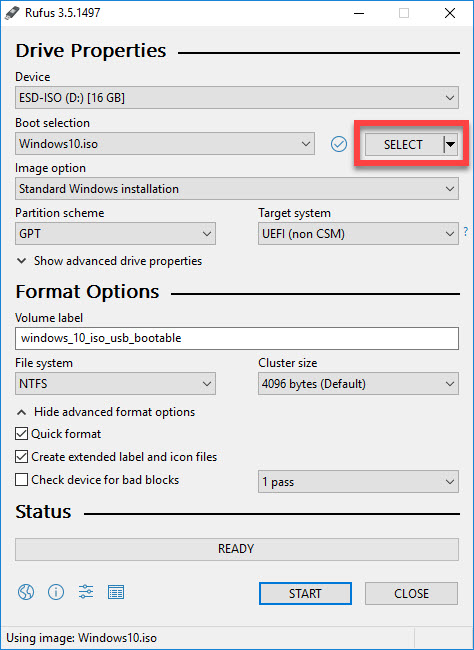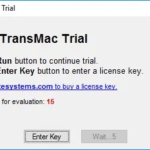In this tutorial, I will show you the steps to create a bootable USB flash drive with support for UEFI using Rufus tool.
Here is the easiest method to create a bootable USB media to install Windows 10 on devices using UEFI.
You may also like:
- How to create Windows 10 USB Install Drive
- How to check if drive uses GPT or MBR partition style on Windows 10
How To Create a Windows 10 UEFI Boot Media With Rufus
Make sure that you have a USB flash drive with at least 4GB of space
Step 1. To begin, download Rufus latest version click here.
Step 2. Launch Rufus tool by double-clicking the Rufus-x.x.exe file.
Step 3. Now, plug-in your USB into your computer.
Step 4. Under “Device” choose the USB flash drive.
Step 5. Under “Boot selection” click on the Select button. Go to to the Windows 10 ISO file and select the .ISO image. Click on the Open button.

Make a Windows 10 USB Flash Drive using Rufus 3.5.1497
Step 6. Look for the “Image option” and from the drop-down, select the Standard Windows installation option.
Step 7. Look for the “Partition scheme and target system type” and from the drop-down, select the GPT option.
Step 8. Look for the “Target system” and from the drop-down, select the UEFI (non CSM) option.
Step 9. Go to the “Show Advanced drive properties” section, leave the default settings.
Step 10. In the “Volume label” field, put a descriptive name for the drive. For example: “windows_10_iso_usb_bootable”
Step 11. Go to the “File system” and “Cluster size” section, leave the default settings.
Step 12. Click the Show advanced format options button, and tick “Create extended label and icon files” and “Quick format” options.
Step 13. Finally, tap on the Start button. Tap on the OK button to confirm that the USB flash drive will be wiped out.
Now the Rufus tool will create a bootable media that allows you to start your device with the installation media to clean installation or perform an upgrade of Windows 10.
VIDEO TUTORIAL:
Hope something helps you.
See also: How to install Windows 10 from USB with UEFI support





